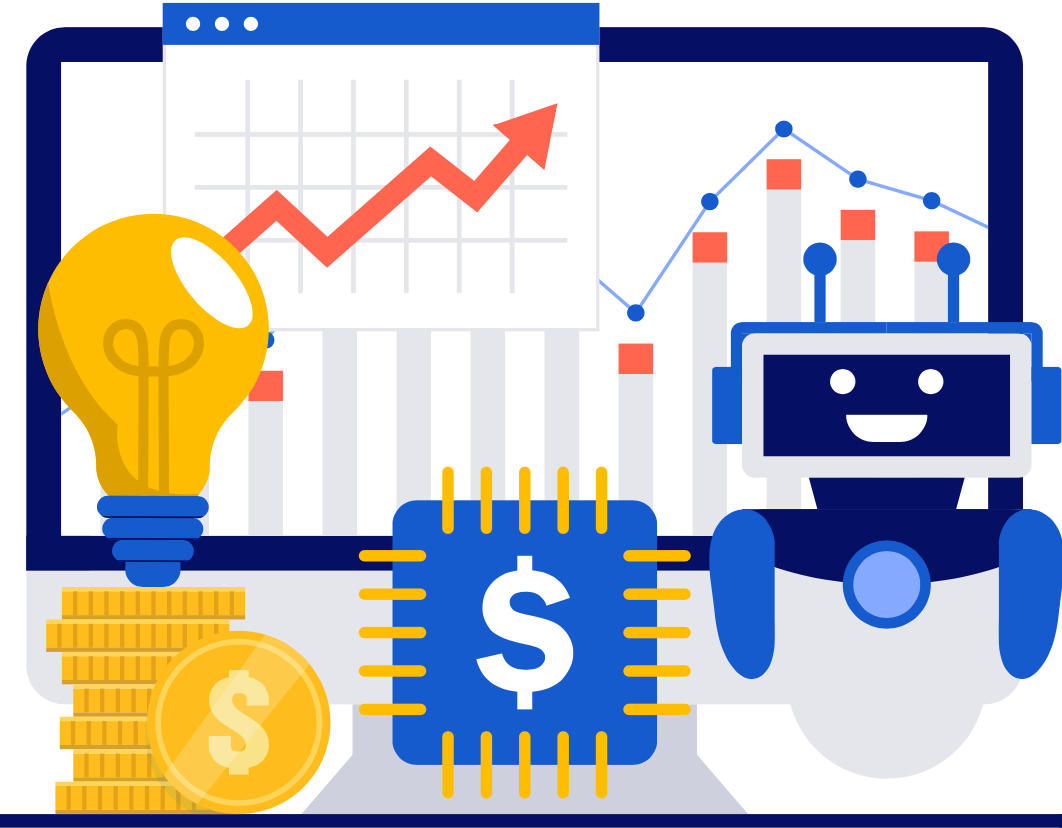Menu
- About Us
- Services
- Industries
- Resources
- Careers
- Contact

As a supply chain executive, you understand how crucial it is to have streamlined and efficient operations that deliver the best outcomes for your organization. Automation technologies have played a significant role in transforming the supply chain management industry, and Robotic Process Automation (RPA) is one of the most promising technologies in this regard.
RPA has already helped organizations achieve significant improvements in accuracy, efficiency, and cost-effectiveness by automating repetitive and time-consuming tasks. But what does the future hold for RPA in the supply chain management industry? In this article, we will explore the trends and predictions for RPA and its impact on the supply chain.
The implementation of RPA in supply chain management has revolutionized the way organizations operate, as it enables businesses to streamline their operations, reduce costs, and improve accuracy. One of the most significant advantages of RPA is that it enables organizations to automate repetitive and time-consuming tasks. These tasks may include data entry, invoice processing, and order management, among others. By automating these tasks, organizations can eliminate the risk of human error and ensure that these tasks are completed quickly and efficiently.
As a result, employees can focus on more strategic and value-added activities that can help the business grow. These activities may include analyzing data to identify trends and areas for improvement, making decisions based on data-driven insights, and building strong relationships with suppliers and customers. By automating mundane tasks, employees can devote their time and energy to activities that require human expertise and creativity, which can ultimately lead to higher job satisfaction and improved employee engagement.
As the field of supply chain management continues to evolve, we can expect to see a growing reliance on data analytics and predictive modeling, enabled by RPA. With RPA, organizations can collect, process, and analyze vast amounts of data from various sources, including suppliers, customers, and internal systems. By leveraging this data, businesses can identify patterns, forecast demand, and optimize their operations to improve efficiency and reduce costs.
By utilizing predictive modeling, organizations can also anticipate potential supply chain disruptions and take proactive steps to minimize their impact. For example, businesses can use predictive models to anticipate changes in customer demand or to identify potential issues with suppliers before they occur. This enables companies to take corrective action before problems escalate, improving their ability to meet customer demand and reducing the risk of costly delays or disruptions.
As RPA becomes more prevalent in the field of supply chain management, we can expect to see increasing integration with other technologies such as machine learning, artificial intelligence, and blockchain. By combining these technologies, organizations can develop more sophisticated and intelligent systems that can learn from past experiences and adapt to changing conditions. Machine learning algorithms, for instance, can be used to optimize inventory levels by analyzing past demand patterns, identifying trends, and forecasting future demand. This can help businesses maintain optimal inventory levels, reducing the risk of stockouts or overstocking.
In addition, blockchain can be used to create a more transparent and secure supply chain ecosystem.
By tracking products from the source to the end consumer, blockchain can provide a complete and immutable record of each product's journey through the supply chain. This can help businesses ensure product quality and authenticity, reduce the risk of counterfeit goods, and provide customers with greater visibility into the products they purchase. As supply chains become more complex and global, the integration of RPA with these emerging technologies can provide businesses with a competitive edge, enabling them to improve efficiency, reduce costs, and enhance the customer experience.
With the growing adoption of RPA in supply chain management, we can expect to see more standardization and collaboration across the industry. This trend towards standardization and collaboration can lead to the development of common RPA platforms and best practices, creating a more streamlined and efficient ecosystem. This will help companies to adopt the technology more easily, reduce costs and duplication of efforts, and allow for smoother collaboration across different departments, suppliers, and partners.
In addition, standardization and collaboration can also promote greater transparency and accountability within the supply chain. By using a common RPA platform, companies can share data more easily and gain insights into the operations of their suppliers and partners. This can help identify areas for improvement and enable companies to work together to address common challenges such as reducing waste, improving sustainability, and enhancing customer satisfaction. Overall, the trend towards standardization and collaboration in the supply chain industry is likely to accelerate as companies seek to adopt RPA and other emerging technologies to drive growth, innovation, and efficiency.
Supply chain risk management is becoming an increasingly critical area for businesses, particularly in the wake of global supply chain disruptions caused by events such as natural disasters, pandemics, and geopolitical instability. RPA can be an effective tool to mitigate these risks by providing real-time data on potential disruptions and enabling businesses to take swift corrective action. By automating tasks such as monitoring supplier performance and tracking shipments, RPA can help companies identify potential risks early on and take proactive steps to mitigate them. This can reduce the impact of supply chain disruptions on business operations and improve overall supply chain resilience.
In addition to monitoring supplier performance and tracking shipments, RPA can also be used to analyze data from various sources to identify potential risks. By using machine learning algorithms and other advanced analytics tools, RPA can help businesses identify patterns and trends in supply chain data that may indicate potential risks. This can enable businesses to take proactive steps to mitigate these risks before they become major problems. As such, RPA can play a crucial role in supply chain risk management by providing businesses with real-time data and insights that can help them make more informed decisions and take proactive steps to protect their operations.
The growth of the RPA market is a clear indication that more companies are recognizing the benefits of implementing this technology in their supply chain management. The ability of RPA to automate repetitive tasks, analyze large amounts of data, and identify potential risks has made it an attractive option for companies looking to improve efficiency and reduce costs. The Grand View Research report predicts that the global RPA market will continue to grow at a CAGR of 33.6% from 2020 to 2027, reaching $25.56 billion by the end of the period.
The increasing demand for RPA solutions is driven by the need for more efficient and cost-effective supply chain management processes. As companies look to remain competitive in an ever-changing global market, the adoption of RPA will become more crucial. Additionally, the pandemic has highlighted the importance of supply chain resilience, further emphasizing the need for technology solutions that can improve supply chain efficiency and risk management. As the benefits of RPA continue to be demonstrated, we can expect to see a continued growth in the market, with more companies adopting this technology to improve their supply chain management practices.
The future of supply chain management with RPA is bright, and there are many exciting trends and predictions for this technology. By adopting RPA, supply chain professionals can streamline processes, improve efficiency and accuracy, and make better-informed decisions based on data analytics and predictive modeling. As the technology continues to evolve and mature, we can expect to see even more innovative applications and use cases emerge, transforming the way we manage supply chains in the years to come.
As a supply chain executive, it's important to stay ahead of the curve and identify opportunities for growth and improvement. By exploring the trends and predictions for RPA in supply chain management, you can gain valuable insights into how this technology can help you optimize your operations and drive better outcomes for your organization. So, don't wait any longer, embrace the future of supply chain management with RPA today!
Get the latest insights for business leaders looking to eliminate mistakes and repetitive processes with technology.

Solugenix
Technology & Process for Growth
601 Valencia Ave, Suite 260
Brea, CA 92823
Call us: 1-866-749-7658